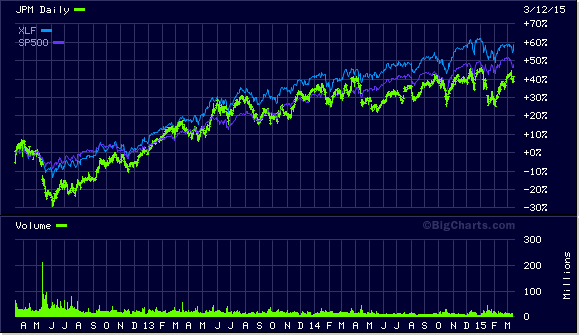Global Stress Test Investing Daily
Post on: 13 Июнь, 2015 No Comment

As the global bull market extends past its sixth anniversary, investors should be preparing for stock market corrections or even crashes in various industries and countries. What crashes generally recovers, except when a crash causes bankruptcies.
So the trick is avoiding areas where a crash could wipe out wealth permanently.
The main reason for expecting a general market crash is the extreme global monetary policies over the last seven years. Those easy-money, low-interest-rate policies have inflated both stock prices and debt. The S&P 500 index is currently trading about 40% above its 2000 peak, which was already far above historical valuations.
And the sharp fall in oil prices has worsened the debt levels. Oil-related debt, whether to some U.S. energy exploration companies or to oil-dependent countries such as Russia and Venezuela, now is at perilous levels.
Then you have the tech sector. It’s full of companies with valuations of $10 billion or more that are still losing money. Historically, asset bubbles fueled by too-easy money crash painfully – its been true ever since the South Sea Bubble of 1720.
So the only question is not whether a crash will occur, but where it will happen and how big it will be. But again, the crash you have to defend against is one where your wealth isn’t just beaten down temporarily, but where it evaporates.
Emerging Time Bombs
Among emerging markets, for example, the most dangerous places are those likely to run out of money in a credit crunch. If they already have large balance of payments or budget deficits, they are drawing heavily on the global funding markets to maintain themselves.
So in danger are Peru, with a projected (by the International Monetary Fund) 2015 current account deficit of 5% of GDP, Ghana, with a projected deficit of 8.5%, and Kenya, with a projected deficit of 8.1%. These examples are of countries considered to be reasonably well-run. We doubt you have much money invested in these countries, but don’t be surprised if your emerging market fund takes a hit if they tank.
Africa, which has enjoyed an excellent run recently, seems likely to get into financing trouble in the downturn. There are only a few exceptions, like Botswana, projecting a current account surplus.
Among rich countries, Britain the U.S. and New Zealand are all projected to run substantial current account deficits in 2015. But their ability to borrow more money isnt in doubt, for the moment. A crash and subsequent recession will weaken them, but they have time to restore fiscal, monetary and balance of payments discipline.
On the other side are countries such as Germany and the Philippines, which consistently run current account surpluses. Such countries dont borrow much internationally, and are thus invulnerable to any kind of credit crunch. The Philippines gets little credit from analysts for its economic performance—its growth in the 5% to 6% range recently has been stellar.
There are other vulnerabilities. The euro currency zone, which locks countries into a single exchange rate even though their economies may diverge, also produces vulnerabilities in a downturn. France and Italy, for example, both have excessively large government employment, onerous tax levels and expensive social programs.
Without the ability to devalue, a downturn exposes these vulnerabilities, makes their governments possible defaulters and their companies highly vulnerable to deep recessions. In 2008 to 2009, Latvia and Slovakia, whose currencies were linked to the euro, suffered deep recessions. Poland, whose currency floated freely, suffered much less. Brazil and India, among other emerging markets, have both over-sized governments and current account deficits, and so exhibit both these vulnerabilities.
Economically, the principal sectors where permanent losses of wealth seem likely are energy and tech. In the energy sector, the halving of oil prices has put a huge financial strain on many second-tier operators with expensive reserves. That strain is not apparent immediately for two reasons.
First, many companies hedge their output prices in the forward markets, so suffer no losses until the hedges at high prices run out, probably this summer. Second, companies have cash reserves and spare borrowing capacity, so they take time to go bankrupt. Nevertheless, we can expect to see substantial energy sector bankruptcies, with losses for their bondholders and stockholders.
In the tech sector, companies typically make losses and plow money into expansion in their early years. However, the definition of “early years” has expanded in this cycle, and many tech companies have survived for a decade or more, raising venture capital at higher and higher prices, while still taking losses.
Even companies such as Tesla Motors have attained a substantial market capitalization of $25 billion while continuing to report losses. Needless to say, in a crash and credit crunch there will be a shakeout, with companies bleeding cash and going under for want of financing. Others will be forced to take “rescue” financing packages on onerous terms.
Why take on such tech risk when there are plenty of great tech companies making money to choose from, such as Apple and Verizon?














